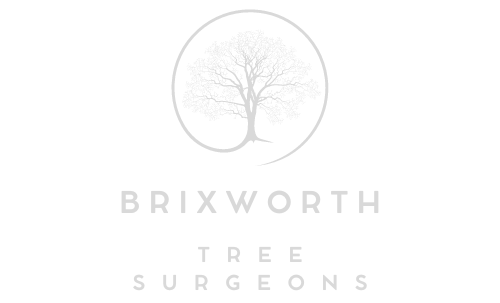Tree Surgery Is Not Just for Sick Trees — Here’s What Else It Does
Introduction
When most people hear the term “tree surgery,” they often think of diseased or damaged trees being rescued from decline. While treating sick trees is indeed a vital part of the job, tree surgery involves much more than just damage control. In fact, tree surgeons play a crucial role in maintaining healthy, attractive, and structurally sound landscapes all year round.
At Brixworth Tree Surgeons, we work across Northamptonshire providing tree care that enhances the appearance, safety, and long-term vitality of outdoor spaces. In this article, we’ll explore the many roles of tree surgery, and why it’s essential even when your trees appear healthy.
Key Takeaways
- Tree surgery improves shape, structure, and safety
- Helps manage growth in residential and commercial settings
- Prevents future problems through proactive maintenance
- Enhances light, space, and property aesthetics
- Supports biodiversity and tree longevity
1. Crown Shaping and Aesthetic Enhancement
One of the most common services we provide is crown shaping—refining the form of a tree to make it more balanced, symmetrical, and visually appealing. Trees often grow unevenly due to wind exposure, shading, or competition with nearby plants.
Through careful, professional pruning, tree surgeons can improve the overall appearance of your garden, ensuring trees remain a beautiful feature rather than a messy, overgrown presence.
Visual improvements include:
- Creating uniform shapes for a tidier look
- Enhancing views across the garden or property
- Preventing trees from looking top-heavy or sparse
2. Managing Size and Preventing Overgrowth
Left unchecked, even healthy trees can grow to become problematic or unmanageable. They might block out sunlight, encroach on neighbouring properties, or grow too close to roofs, windows, or power lines.
Tree surgery allows you to control the size and spread of trees through methods like crown reduction, thinning, or lifting—ensuring they stay within their space and don’t interfere with buildings or pathways.
Practical benefits:
- Maintains safe distances from structures
- Keeps driveways, walkways, and gardens accessible
- Prevents excessive shading in outdoor spaces
3. Enhancing Safety and Reducing Risk
Even healthy trees can present hazards. Over-extended limbs, crossing branches, and heavy, unbalanced growth can lead to branch failure in high winds or storms. Tree surgery helps reduce this risk by selectively removing vulnerable or overloaded limbs before they become a problem.
By proactively managing your trees, you can protect people, vehicles, and property from unexpected damage—especially during harsh weather or as trees age.
Safety-focused tree care includes:
- Removal of deadwood
- Reducing canopy density to lower wind resistance
- Addressing structural weaknesses early on
4. Improving Light and Space in the Garden
Well-positioned trees can provide welcome shade, but too many dense canopies can leave gardens feeling dark and confined. Tree surgery techniques such as crown thinning and canopy lifting allow more natural light to filter through, making outdoor spaces feel lighter, larger, and more enjoyable.
This is particularly useful in urban gardens or smaller properties where every ray of light counts.
Advantages for homeowners:
- Increased natural light for plants and living areas
- Improved garden usability and enjoyment
- Opens up views and sightlines
5. Encouraging Healthy Growth and Longevity
Routine tree care promotes strong, healthy growth by removing weak or poorly placed branches and allowing energy to be directed to healthier parts of the tree. This can also help younger trees develop strong, balanced structures that will support them for decades.
Tree surgeons also monitor for early signs of decay or pest problems, often catching issues before they become serious.
Health benefits of proactive care:
- Promotes better air circulation and light penetration
- Prevents stress from overcrowded limbs
- Supports longer life expectancy for mature trees
6. Supporting Biodiversity and Wildlife
Trees don’t just serve the people who plant them—they also provide habitat for birds, insects, and other wildlife. By managing trees in a careful, considered way, tree surgery can help enhance biodiversity within your garden or green space.
Well-maintained trees are more resilient, more productive, and more capable of supporting wildlife throughout the seasons.
Environmental contributions:
- Maintains healthy habitats for native species
- Encourages pollinators and birds
- Reduces need for chemical interventions
Conclusion
Tree surgery isn’t just about rescuing trees in distress—it’s about enhancing their health, managing their growth, and ensuring they continue to add beauty and value to your property. From shaping and pruning to improving safety and encouraging biodiversity, there’s a wide range of benefits to be gained from regular, expert tree care.
At Brixworth Tree Surgeons, we provide comprehensive tree services to homeowners, landowners, and businesses across Northamptonshire. If you want your trees to look better, live longer, and cause fewer problems down the line, contact us today. Let’s take care of your trees—before they become an issue.
Call us on: 01604 279 593
Click here to find out more about Brixworth Tree Surgeons
Click here to complete our contact form and see how we can help with your tree needs.

